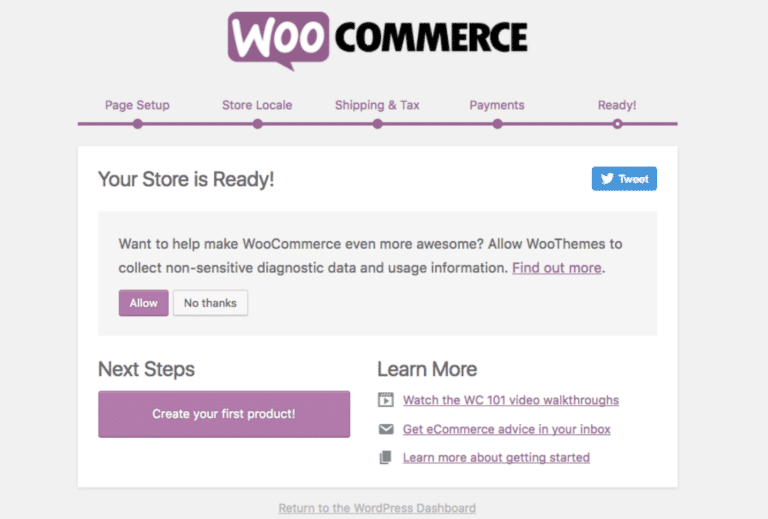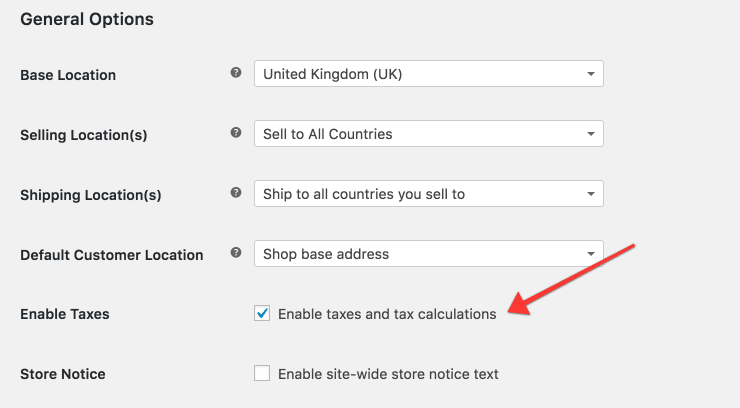How to Setup of Taxes in WooCommerce
WooCommerce empowers millions of immortal sites worldwide and is the only WordPress plugin to list the remaining e-commerce platforms. Available directly from WooCommerce as an e-commerce option offered by most such web hosting providers. This allows both developers and new users to have no experience in web design to create a visually appealing. It fully functional online storefront inside an existing WordPress powered site.
WooCommerce is easy to install and illegal any digital or physical products. Website owners around the world can use the Bird Press plugin to open online shops and process payments. Can proceed to find out how to WooCommerce for your business and accounting services.
How WooCommerce Works
A user who wants to build an online store needs a platform that is capable of handling all stages of the transaction itself. Dedicated e-commerce hosts like Shopify provide users with a storefront with full functionality on their sites, but they require a monthly fee. And users do not always have complete control over the look and functionality of their website. WooCommerce and other WordPress plugins provide another option. Flexible customizable and free end fees and third-party control over critical aspects of online stores.
WooCommerce is the most popular WordPress e-commerce plugin for precisely those reasons. Like many other WordPress plugin options, it is entirely free to use and installed on any compatible WordPress site. Because WooCommerce is a plugin, it integrates seamlessly with the site’s existing WordPress theme and moves along all parts of the website. Once established, the commerce added to the site’s WordPress dashboard, which includes tools for statistics and reporting for Google Analytics and managing e-commerce functions like adding products and handling sales.
A complete e-commerce solution for a WordPress site.

User requires a simple tool for taking payments, WooCommerce is a fully functioning single platform that connects all components of an online store to any website site. Like WordPress itself, it is an open-source project from which it can be continuously updated and customise for any user’s needs. Its source code is readily available and large and growing features of beginning and advanced users’ knowledge and help. WooCommerce can be easily set up and customised to use the interface. Therefore, there is no information about website development. But advanced users can also work with source code for greater control over its functions and appearance. However, for all users, WooCommerce provides all the tools necessary to create a fully online store.
The essential WooCommerce plugin contains all the necessary e-commerce platform elements. Users can customise the look of the storefront and keep it compatible with the rest of their brand and website. Product pages can be added as requires and include options to add pictures and product information or to include coupons and discount.
WooCommerce also supports a wide range of shopping carts and checkout options with a variety of payment options that may correspond to sales worldwide or sales from specific countries.
The WooCommerce plugin can add more functions through its many extensions. Secondary plugins that calculate shipping rates can perform several specific tasks, such as adding analytics or managing digital downloads. WooCommerce is flexible and scalable so that it can support the changing needs of the growing online business.
Setting up WooCommerce on a WordPress site.

You will need an existing WordPress site to set up WooCommerce. Most hosting providers include this as one of many options to install multiple new sites. It can add it directly to their existing locations from the WordPress plugin directory. WooCommerce includes a quick start setup wizard that easily configures the site’s appearance, adds product pages and sets shipping and payment information. More intelligent and creative users can take care of these functions and further WooCommerce through the plugin’s code editor. Once established, the tool for managing trade is available on the site’s World Dashboard. From the dashboard, users can access a wide variety of analyst and reports from within the commerce. Those that display data such as site performance and traffic and store presence and manage product listings.
Adding Products to WooCommerce

WooCommerce comes with various options for selling both physical and digital goods. Products from the Dashboard. Click add product. It opens a new version of the original WordPress editor which also includes WooCommerce tools to add pictures and product information such as shape color and value. Product information always edited, and products removed at any time.
Payment Management with WooCommerce
WooCommerce has a solution for a wide range of payment and shipping functions. The WooCommerce Extension allows users to assemble these options for the world’s currencies. And users can choose from over 120 free and paid gateway applications such as PayPal Stripe and Square to install on the checkout page.
Fulfilment of orders through WooCommerce.
WooCommerce allows you to accept and collect payments as well as calculate shipping costs to destinations or only specific locations around the world. Extensions can add functions such as creating tracking orders and PDF invoices, checking slips and creating shipping levels. Digital products sellers can set up instant downloads on payment. And WooCommerce also allows users to include products sold on external websites at the store.
Installing WooCommerce Extension
Hundreds of WooCommerce extensions are available, and they can help the plugin fully sprout and expand its functionality to meet the specific needs of the store. Search the WordPress Plugin Directory of Free WooCommerce Extensions or purchase and install extensions created by third-party developers around the world. When no longer needed, extensions can be removed or changed to meet changing needs.
Using WooCommerce is not for everyone. Popular e-commerce hosting platforms such as Shopify and Magneto can offer a wide range of e-Store services with the convenience of third-party management for the value of users. Online business owners who desire flexibility, measurement and full control over the digital storefront. WooCommerce provides all the tools to create a completely online enterprise entirely for free.
How to setup Tax in WooCommerce
Your business is currently required to meet the tax duties and other legal obligations of the state of the country, although it is necessary to set up stick tax settings. People do not usually meet with the idea of ??setting it on their own.
WooCommerce cannot enter your accounts; you should consult your account for that. What can it do that provides settings that allow it to follow your local tax rules? WooCommerce provides the necessary facilities to make your life easier, simplify the overall process. It is a necessary procedure for configuring and configuring WooCommerce based online store.
Enabling the WooCommerce Tax Option.

First and foremost, will be to open your World Press dashboard and WooCommerce – setting- click. This will take you to the General Settings page of your WooCommerce plugin.
Once you get there, you need to scroll down and click the enable option as shown in the image above. After this, you must click on this option to save changes. This will help to create automatically create a new tab labeling tax. It set up once, and now you can go directly to the WooCommerce Tax option. By following, WooCommerce – setting-tax.
Finding WooCommerce Tax Options.
Then you must click on the tax tab right in front of the product tab, and you are there.
Exploring various tax options
Now that you are inside, it is time to delve deeper and understand each option.
Prices recorded with tax.:
You need to find out how you want the WooCommerce to do to calculate. Then there are two options.
“Yes, I will enter the inclusive price.”
Choosing this option allows you to calculate the value based on your store.
“No, I will enter the exclusive price.”
By choosing this option, you will be able to calculate the unique value, on which you will have to figure the function of the additional cost which displayed during the checkout phase.
Calculate tax based on
Now you come to the next option; here you can determine which place you are using to set your tax form. You can access them from the drop down.
Shipping tax category
The shipping tax class will determine which tax class levied for shopping. Suppose you have an item such that the work sent to tax, yet you have to select the option with a lower tax rate from the drop-down. Shipping tax usually based on the products in the class cart. So if any of your buyers add a product that classified as a separate tax rate. So the rate of tax for shopping is calculated in the same way. But if your jurisdiction does not comply, then you can refer it to another tax category.
Let us take an example and see the shipping class in action. Suppose that zip code 30301 Standard for shipping items to Atlanta Georgia tax rate is 7.75? While zip code 30302 Shipping on 8.96?.
Once we set the tax rates, we can go to the cart and view the shipping rates. To calculate shipping rates, we are using the WooCommerce FedEx Shipping plugin. This plugin provides real-time shipping estimates with print shipping levels and lives shipment tracking options. So as soon as the customer takes an item to cart and enters the shipping address. He will look at FedEx shipping rates. On shipping rates, you will see that the tax is displayed separately and is different at both the addresses configured in the plugin settings.
Additional Tax Class
WooCommerce allows you to create other tax classes. As you may have seen earlier, there are other tax classes also comes with a low rate and zero rates. So to create a new tax class, you have to enter the tax name of the text field first. Go ahead and enter the new tax category in the area.
As soon as a user creates a new tax class, you will then have to click on change changes. You can set the rate for the newly created tax class by entering all the required data.
Display price in store
This option will allow you to modify how taxes will appear on the website. Here you have two options which include tax and exclude charge. These taxes appear on the noise in front of your online store where your product listed.
Display precious during cart and checkout.
After this, there are two settings where you can determine that value cards will be displayed on the checkout pages inclusive or exclusive. You again have the option of including tax and excluding tax.
Price Display Suffix
This option helps display text after the price of your products. It can be something like VAT inclusive. With this option, you can set your price display to use either of the two options or to insert it as a tax. Price including tax and expenditure, excluding tax.
Display text total
Finally, you can determine how to display the tax total during checkout. Whether to view more than one or multiple rates listed as one. Once you update the settings, be sure to click the Save Changes button.
Conclusion
We have covered basic tax settings in WooCommerce. Your tax calculation is dependent on the legal liability of the base of your store and the place of sale. With all these settings, you can take help of setting up the text on WooCommerce based store.
The post Complete Guide on How to Setup of Taxes in WooCommerce appeared first on WP Fix It.
from WP Fix It http://bit.ly/31MhrZj
via IFTTT

Post a Comment
Don't try to insert your link to make Spam your comment.